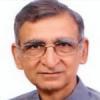The nationalism which was at the root of freedom movement, which is based on inclusive pluralism, is currently under severe strain with the ascendance of the politics of RSS combine. All the wings of RSS are actively infiltrating and dominating most of the fields of our social and political life. Running parallel to this is the attempt to create a narrative, which shows the continuum of Hindu nationalism from times immemorial. In constructing this ideology the biggest hurdle it faces is to hide its role during freedom movement- its pro British role. In this direction it is generating a description of events to show as if they were part of the freedom movement. Their ideologues are burning midnight oil to construct a picture which is far away from the truth of their betrayal of freedom movement. At the same time they also want to appropriate the icons, which had either some tactical difference with Gandhi-Nehru or chose another path for the fight against British Empire.
The first major attempt in this direction was to show their fondness for the lifelong Congressman, the strong disciple of Mohandas Karamchand Gandhi and close associate of Jawaharlal Nehru, Sardar Vallabh Bhai Patel. Digging out some small issues they assert that had Sardar been the First Prime Minister of India, the problems like Kashmir would not have been there. Taking the matters further now they are making all out attempts to propagate that Bhagat Singh who was given death sentence by British; was not saved by Gandhi. This propaganda ignores the fact that Gandhi did his utmost to save Bhagat Singh, Sukhdev and Rajguru’s life but the British Government was determined not to pardon Bhagat Singh and his comrades. They also ignore the fact that the Bhagat Singh himself had rejected any suggestion for seeking pardon from British Government. His was a clear and principled stand to inspire the whole nation through his transparent actions.
All this comes to one’s mind yet again when the busts of Bhagat Singh, Netaji Bose along with Savarkar, (being called Trimurti, triumvirate) were put on the same stand and put up in the Delhi University campus! (Late August 2019) To put Savarkar on the same league as Bhagat Singh and Netaji Subhash Bose is part of a multi pronged agenda. This is an attempt to propagate that Savarkar was anti British revolutionary like the other two. One knows that Savarkar was anti British only in the first phase of his life, till he was imprisoned in Andamans. During his imprisonment he underwent a transformation and sent five mercy petitions for getting release. For RSS and Hindu nationalists, Savarkar is the biggest ideologue as he defined Hindutva, the ideology of Hindu nationalism, despite himself being agnostic-atheist. His ideas are the foundation of Hindu nationalist politics. In his book on 1857 uprising he demonstrated Hindu-Muslim unity in the struggle against British. Later with his transformation into the founder of Hindu nationalist ideology he made anti-Muslim rhetoric as the binding glue for uniting Hindus along communal lines.
In contrast; the icons whom RSS combine wants to link with Savarkar, Bhagat Singh and Netaji, (trimurti) were anti British to the core. Bhagat Singh was a communist and Netaji a Socialist. Bhagat Singh saw the centrality of Gandhi’s inclusive movement as the fulcrum of Indian nationalist movement. Netaji despite differences in approach could see that Gandhi is the ‘father of the nation’. Their difference was not on the concepts of Nationalism; they were more around the methods. Gandhi firmly stood for non violence. During Second World War Gandhi launched ‘Quit India’ movement for weakening of British hold and for strengthening the bonding of Indian nation. Here Bose was for alliance with Germany –Japan Axis.
In that sense Bhagat Singh, Bose, Gandhi and his followers stand in one category belonging to Indian nationalism. While on the other hand Jinnah, after joining Muslim League and Savarkar, the guiding light of Hindu Mahsabha, are in another group. They harped on religion as the basis of nationalism. Incidentally this ideology emerged from the classes of Kings and Landlords in particular. While the major supporters of Indian nationalism, came from different sections of society, industrialists-businessmen, Workers and educated middle classes among others. The latter aspired for the principles of Liberty, Equality and Fraternity cutting across religions, while the former take inspiration from the feudal values of birth based hierarchies.
So what happened in Delhi University is the initial sample of what the rising religious nationalism wants to construct. Historical narrative and icons are crucial ideological pillars of nationalism. So far we have seen one aspect of RSS combine where history has been constructed to glorify Hindu Kings along with upholding the teachings of Hindu scriptures of Manu Smriti variety. The DU incident seems to be a part of second aspect of the ideological necessity of Hindu nationalism. In this aspect those icons are being selected who had some differences with Gandhi (Bose-Bhagat Singh) and Nehru (Patel). These ‘in house differences’, which were within the fold of India nationalism are being twisted and attempt is on to make look as being in alliance with Savakar, the one who betrayed freedom movement. While DU incident may sound a minor one, it hides a bigger ideological propaganda where RSS combine are trying to artificially bring together those whose differences are irreconcilable i.e. difference between Indian Nationalism and Religious (Hindu or Muslim) Nationalism on the same pedestal.
Such attempts by Hindu nationalists are trying to obfuscate the core ideological divides. The need is to understand the diverse ideologies of these icons and to show their basic differences. It is not just a question of a bust being installed; the question is which type of India we envisage, the one which was dreamt by Bhagat Singh, Bose, Gandhi and Ambedkar or the one being shrewdly instilled currently by those who uphold the likes of Savarkar with glorification of the past where inequality was the norm of social life.







Comments
Add new comment